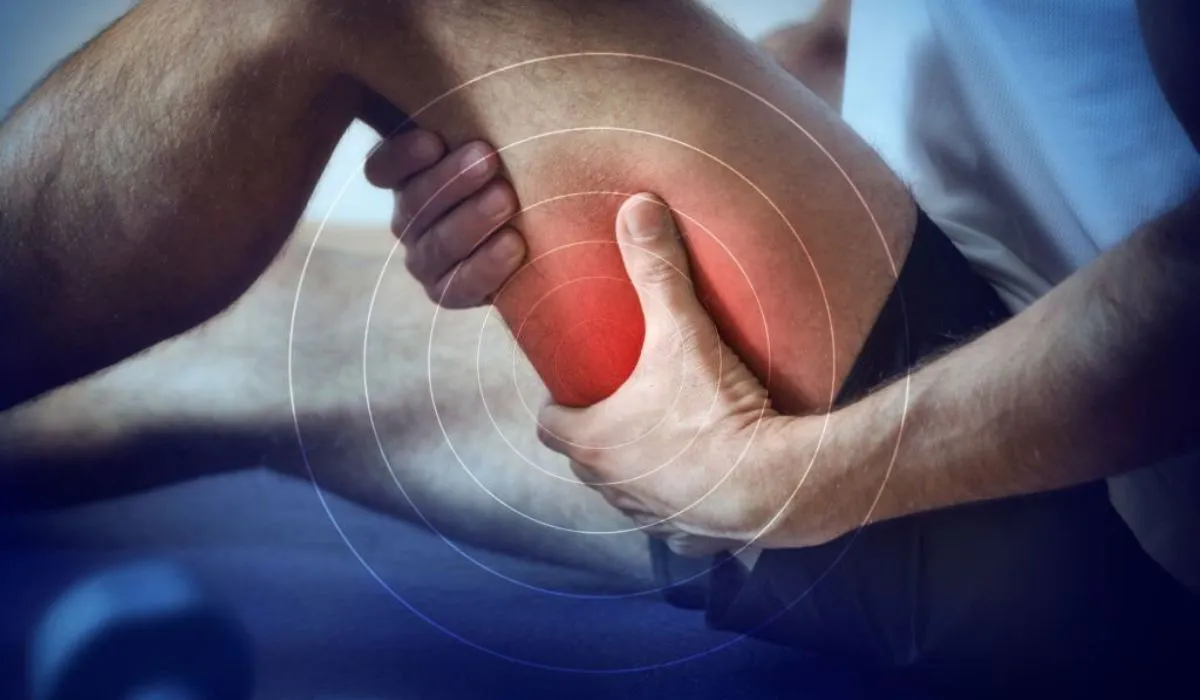The hamstring strain/injury being very common, is, however, deemed truly hard for someone to bear when experienced. The current article, therefore, attempts to gather relevant information on what causes hamstring strain and outlines possible treatments for the same. Ways to prevent hamstring strain will be covered, including methods that will result in a fast healing of the injury. The concluding portion points out ways to recover from such an incident.
Hamstring Strain – How It Happens?
Understanding Hamstring Strain
It has been felt reasonable to mention here that the hamstrings are a group of three major muscles, namely semitendinosus, semimembranosus, and biceps femoris. These muscles are usually found located at the back of the thigh and present as two-joint muscles. Meaning that they involve two joints, namely the glenohumeral, i.e., the hip joint, and the tibiofemoral (the knee joint), through which they pass.

It is this anatomical presentation of these three muscles that assist in movements, such as hip extension and knee flexion. Of note, these repeated motions make these muscles highly susceptible to strains/injury. While this statement may instill some concerns, especially regarding the association between movement and strain of these thigh muscles. One must rest assured that such an injury is usually common with sportsmen/athletes.
What Causes Hamstring Strains?
The repetitive muscle movements of the thighs, and that too highly related to sports, have been regarded as the most common cause to explain hamstring injury. these can also be brought on or even aggravated by various other factors, some of which have included the following:
- Inappropriate Warming Up Before Exercise: Not warming up properly before exercising will cause the thigh muscles to remain tight. This tightness makes them highly vulnerable to strains and injuries. Proper warming up will help these muscles to stay strong and flexible, thus protecting them from any kind of strain or injury.
- Muscles Being Out Of Shape: Similar to the above, if one strains or over-indulges one’s hamstring muscles harder without properly warming them up, there are chances that these may become weak and get out of shape. Since weak muscles will not be able to handle the highly strenuous exercise, the likelihood of them being injured or strained is high.
- Muscle Imbalance: Certain high-speed activities can cause fatigue to the hamstring muscles, even with the strong support of the quadriceps muscles in these tasks. While the former may tire off fast, this leads to an imbalance of the leg muscles. This results in straining those weak hamstring muscles.
How Can Hamstring Strain Be Prevented?
The hamstring strain is highly associated with sports activities and exercises that tremendously involve the stated muscles. Specific measures to help prevent the repeat occurrences of the injury have so far included the following:
- Stretching: A good stretching regimen that involves steps such as sitting on the ground with the legs stretched straight and reaching for the toes will help the hamstring muscles stay flexible. One can also perform this stretching exercise in a standing position.
- Strengthening: Though muscle strengthening is always deemed to be a perfect option to prevent muscle straining, this can, however, prove tricky for the hamstring muscles. Since the hamstring muscles are not as strong as the quadriceps, certain exercises, such as glute bridges and hip thrusts should be considered in a comprehensive hamstring workout.
- Resting: Noting that muscle fatigue is commonly associated with muscle strain in the hamstrings. A short break from strenuous exercises and warming up in between will help these muscles remain strong and flexible.
- Noting the Signs: One must stop right away amid heavy sports or exercise activities if one notices tiredness and achiness in one’s thigh muscles.
- Caution: This tip usually helps adolescents because they are going through a growth spurt. This is marked by fast bone growth, though leaving out the muscles in catching up. This phenomenon affects the hamstring muscles, so parents should check with their children for any problems related to the same.
Read More:- Rehabilitation Exercises For ACL Tear – Factors Causing ACL Tear!
Fast And Quick Ways To Heal Hamstring Strain
- R.I.C.E – It is the short for Rest, Ice, Compression, and Elevation. It is one of the most effective methods to heal hamstring strain in a fast and quick manner. One needs to follow the basic RICE protocol in this regard. Being a stepwise procedure, this method suggests resting the muscles to alleviate the pain, discomfort, and swelling caused by the strain.
- Some over-the-counter anti-inflammatory drugs, such as Tylenol and Ibuprofen medications will be helpful. However, one should not use these on a long-term basis.
- Physical Therapy is yet another effective method. It consists of a detailed treatment plan, including modalities, therapeutic exercises and activities, and manual therapy.
Fast healing, however, depends on the type and grade of the hamstring injury. Whereas the more serious occurrences will require more advanced physical therapy sessions. A surgical option can also be considered if the strain does not recover normally even after trying other available methods.
Read More:- Does Shockwave Therapy Hurt? Shockwave Therapy: Meaning, Benefits, & Treatment
Conclusion
Recovering From Hamstring Strain
As stated above, it is the type and grade of the hamstring injury that helps determine whether fast healing is possible or not. However, recovery is possible if one is truly concerned about managing one’s muscle strain. And is applying every measure possible to relieve the pain and stiffness surrounding one’s thigh muscles.
Thus, as stated, stretching, strengthening, and avoiding activities causes further pain. And this pain, discomfort, and swelling should be considered before going for more advanced treatments such as medications and surgery.
Our recommendations are rooted in genuine belief in the benefits of the products bring to users. When you purchase through our links, we may earn a commission, supporting our testing and development without adding any cost for you. Learn more.

Dr. David G Kiely is a distinguished Medical Reviewer and former General Medicine Consultant with a wealth of experience in the field. Dr. Kiely’s notable career as a General Medicine Consultant highlights his significant contributions to the medical field.


